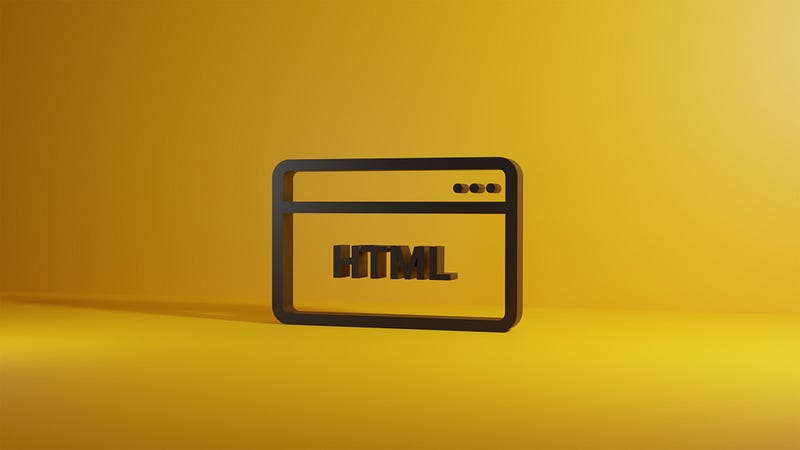Mastering Front-End Development: A Comprehensive Guide
Written on
Chapter 1: Introduction to Front-End Development
As a front-end engineer, whether you're just starting or looking to refresh your expertise, this guide will outline a month-long journey to enhance your skills. It serves as both a roadmap for junior developers and a refresher for those with more experience.
Section 1.1: The Learning Path
This guide is structured to help you build a solid foundation in front-end technologies, including HTML, CSS, and JavaScript.
Subsection 1.1.1: Visual Overview

Section 1.2: Overview of Topics Covered
The topics we will explore include:
- Relearning HTML
- Revisiting CSS
- Diving into JavaScript Basics
- Understanding Object-Oriented JavaScript
- Exploring the V8 Engine Mechanism
- Learning Browser Rendering Mechanics
- Examining Browser Caching Strategies
- Understanding Sorting Algorithms
- Reviewing Design Patterns
- Discussing Networking in Front-End
- Ensuring Front-End Security
Chapter 2: HTML Essentials
HTML is a crucial element of web development. Let's delve into the recent advancements brought by HTML5:
New Features in HTML5:
- Tags: Introduction of semantic tags (like <aside>, <figure>, <section>, <header>, <footer>, and <nav>), along with multimedia tags for video and audio, to improve the separation of style and structure.
- Attributes: Enhancements to the form, focusing on the type attribute, and additions like charset in <meta> for character set specification, as well as async in <script> for asynchronous loading.
- Storage: New options for storage, including localStorage, sessionStorage, and indexedDB, plus application cache to save web applications.
- APIs: Introduction of various APIs, including drag-and-drop, geolocation, SVG and canvas drawing, Web Workers, and WebSockets.
Understanding Doctype:
The doctype declaration informs the browser about the document standard it should use, which can affect how the page renders:
- Quirks Mode: Activated when no doctype is present, leading to inconsistent rendering.
- Standards Mode: Follows W3C standards for document parsing.
Front-End Storage Types:
- Cookies: The traditional method for local storage, limited to 4KB, automatically sent with HTTP requests, and generally well-supported.
- LocalStorage: A new HTML5 feature that offers persistent storage with a capacity of 5MB, retaining data even after the page is closed.
- SessionStorage: Similar to LocalStorage but clears data when a tab is closed, with no data sharing between tabs.
- IndexedDB: A NoSQL database option for asynchronous operations, capable of storing over 250MB of data, but subject to the same-origin policy.
- Web SQL: A relational database option that allows SQL operations within the browser, but comes with compatibility concerns.
href vs. src Attributes:
- href (Hyper Reference): Allows the browser to download resources in parallel, enhancing page performance (e.g., using <link> for CSS).
- src (Source): Causes the browser to pause rendering until the resource is fully downloaded, which is why <script> tags are typically placed at the end of the document.
Meta Tag Attributes:
The <meta> tag provides essential metadata for web pages:
- charset: Defines the character encoding of the document.
- http-equiv: Mimics HTTP headers for cache control and expiration.
- viewport: Controls the layout on mobile browsers.
Viewport Parameters:
The viewport meta tag has several parameters:
- width/height: Specifies the viewport dimensions.
- initial-scale: Sets the initial zoom level.
- maximum-scale/minimum-scale: Limits user zoom capabilities.
- user-scalable: Determines whether users can zoom in or out.
Functions of the http-equiv Attribute:
- expires: Sets expiration for the content.
- pragma: Disables caching.
- refresh: Regularly refreshes the page.
- set-cookie: Manages cookies.
- X-UA-Compatible: Specifies the browser version to use.
Chapter 3: Practical Learning Resources
In this video titled "Stop HTML,CSS,JS Learn this & Become FRONTEND Developer in 30 DAYS Easily," you will discover effective strategies for mastering front-end development in just a month.
The second video, "The 2023 Frontend Development Crash Course - Learn HTML & CSS," provides a comprehensive overview of essential HTML and CSS concepts.
In conclusion, this guide aims to equip you with the necessary skills and knowledge to thrive as a front-end developer. Thank you for reading, and I look forward to your continued engagement with more insightful content.